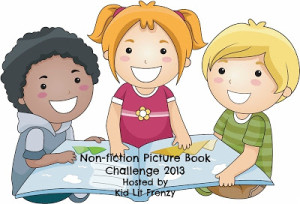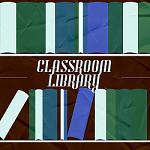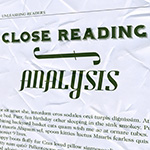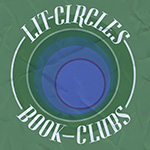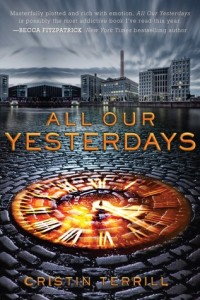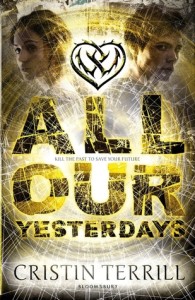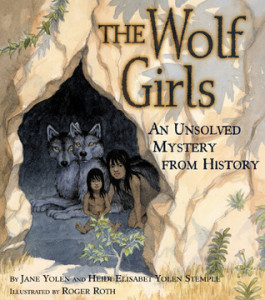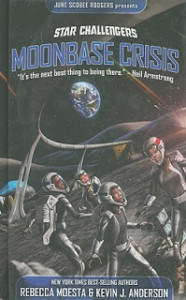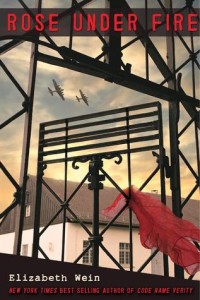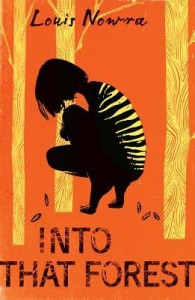Nonfiction Picture Book Wednesday
Nonfiction Picture Book Wednesday is hosted by Kid Lit Frenzy and was started to help promote the reading of nonfiction texts. Most Wednesdays, we will be participating and will review a nonfiction text (though it may not always be a picture book).
Be sure to visit Kid Lit Frenzy and see what other nonfiction books are shared this week!
Roanoke, The Lost Colony: An Unsolved Mystery from History
Author: Jane Yolen and Heidi Elisabeth Yolen Stemple
Illustrator: Roger Roth
Published July 1st, 2003 by Simon & Schuster Books for Young Readers
Goodreads Summary: In 1587 John White was chosen by Sir Walter Raleigh to lead a new colony at Roanoke off the Atlantic coast. After bringing many men, women, and children to the new land, White went back to England to gather supplies for the long winter. But when he finally returned to the fort almost three years later, he found that all of the colonists had vanished. The only signs of life left were the letters CRO carved into a tree and the word CROATOAN carved into one of the fort’s posts. Some people think that the Spanish army captured the colonists; some people think that the local native people murdered them; others think that the colonists went off to live with the native people and start a new life. Still others think that the colonists tried to sail home to England and were lost at sea. No one knows for sure. Become a detective as you read this true story, study the clues, and try to figure out the fate of the lost colony of Roanoke. The Unsolved Mystery from History series is written by acclaimed author Jane Yolen and former private investigator Heidi Elisabet Yolen Stemple. Read carefully and check your clues. You might be the first to solve a puzzle that has baffled people for years.
My Review: Just like all of the others in this series, I found this story fascinating. Unlike, The Wolf Girls, this is a mystery from history that I wanted to learn more about. I had heard of Roanoke, but I didn’t know anything except that it is the lost colony where everyone disappeared. I was never taught about Roanoke, so this was my initial introduction to the colony and man, it is all so fascinating!
Teacher’s Tools For Navigation: I am going to sound like a broken record here, but this, like the other parts of the series, can be used in such amazing ways in the classroom! Check out my Salem Witch Trials and The Wolf Girls reviews to read about how I envision these books being used in the classroom.
Discussion Questions: What do you think happened to everyone? Do you agree with any of the theories given at the end or do you have one of your own?
We Flagged: Narrative nonfiction “The colonists left Portsmouth on April 26, 1587. They planned to meet with the soldiers, then go to Chesapeake Bay, north of Roanoke, where the land was more fertile and the harbor was safer. They sailed in three boats: a flyboat; a pinnace; and the flagship, Lyon. After a month and a haft at sea they reached the Americas at last, stopping first on several islands. At Santa Cruz several colonists ate green fruit. Their lips and tongues swelled badly. A number of people drank from a pond that had ‘water so evil’ they fell dreadfully ill. Some who washed their faces in the water had swollen eyes for five or six days after. They captured five huge tortoises for meat—so large, sixteen men become exhausted hauling them back to the ship.”
Informational nonfiction “For long ocean journeys several types of ships were generally used, including: Flagship- the fleet’s largest, best, or safest ship, on which the commander sailed; Flyboat- a large boat with one or two masts, generally square rigged; Pinnace- a smaller, faster, more maneuverable boat that sometimes carried oars.”
Vocabulary “Fertile: capable of supporting a plentiful crop; Tortoise: land turtle of the warm climates, a good food source because the meat doesn’t spoil quickly” (p. 10-11)
Read This If You Loved: Any of the Unsolved Mysteries from History, Nonfiction books about Roanoke
Recommended For:
